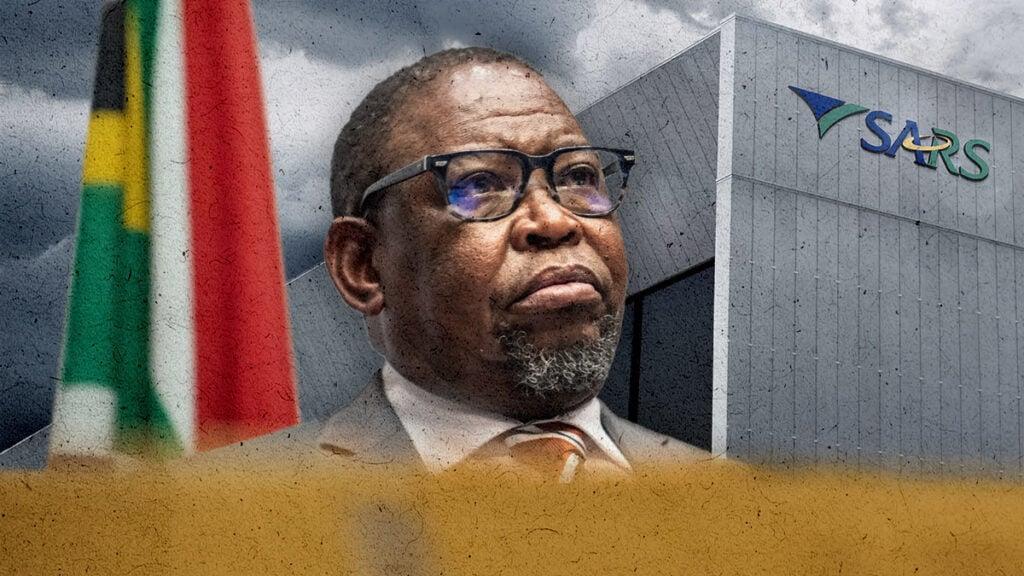Africa-Press – South-Africa. South Africa’s economic disaster has manifested itself as a financial crisis, with the government saddled with an unsustainable debt load that is costing it over R1 billion a day to service.
Despite the state’s finances reaching crisis levels, there appears to be a lack of urgency in addressing the problem.
While the National Treasury’s policy of fiscal consolidation is bearing fruit, it will take years before the country’s debt burden is reduced significantly.
Furthermore, the Treasury has promised a peak in the debt-to-GDP ratio for over a decade, with it yet to happen as economic outcomes have tended to be worse than expected.
Without urgent interventions to boost economic growth, the country’s financial situation will continue to deteriorate, ensuring that increasingly difficult decisions will have to be made.
This is feedback from Efficient Group chief economist Dawie Roodt, who outlined the looming financial disaster heading South Africa’s way on the State of the Nation podcast.
“This is getting much more important for South Africa every day – if your economy does not grow, you will run into financial trouble,” Roodt said.
“The Finance Minister depends on the economy to fund the state, and if the economy is not growing, then neither is government revenue.”
Typically, tax revenue tracks nominal GDP growth over time, with the only other way to increase revenue being increases in tax rates, which is deeply politically unpopular.
What makes the problem much more acute in South Africa is that millions of people are dependent on the state for their livelihood through social grants.
This means that there is a significant, consistent upward pressure on government spending, with grants typically increasing in line with inflation.
In a stagnant economy, government revenue is not growing much faster than inflation, limiting revenue growth and creating major financial problems.
“We know that we have massive unemployment in South Africa and millions of people dependent on the state. State revenue will come under pressure, and it is already under pressure.”
“All I am saying is that we are obsessed with the country’s economic growth and job creation, which is very important, but there is something else that is in deep trouble, and that is the state’s fiscal accounts.”
“The debt levels are unsustainable and will keep on going up. Our politicians don’t know that yet.”
Roodt said that a major concern in this regard is that the Budget has become a way to score political points with the country’s coalition politics, making it difficult to find consensus on key issues.
R1.3 billion a day for ‘nothing’
Efficient Group chief economist Dawie Roodt
South Africa’s financial crisis has begun manifesting itself in the skyrocketing debt-servicing costs the government now pays.
Since its last full budget surplus in 2007/08, the state has run consistent deficits, resulting in a significant debt burden which has crossed 76% of GDP.
The state’s deteriorating finances have also resulted in its creditworthiness declining, making its cost of capital significantly more expensive.
As a result, the government’s debt-servicing costs have sharply increased over the past few years to consume a much larger share of its budget.
In the current financial year, the government will pay R1.1 billion a day to service its debt, spending a total of R424.9 billion.
This will increase to R478.6 billion, or R1.3 billion a day, by the 2027/28 financial year, as the government struggles to arrest its financial decline.
Ultimately, every 22 cents of R1 in tax collected goes towards paying interest on government debt.
This is more than the government is expected to spend on economic development, community development, or even peace and security.
Worryingly, debt-servicing costs will remain the fastest-growing expenditure item in the budget, growing by an average annual rate of 7.1% for the next three years.
This will take debt-servicing costs to R478.6 billion in 2027/28, translating into R1.3 billion a day. It will also mean the government will be spending more on interest payments than social grants and healthcare.
Numerous economists have warned that this increased spending on debt-servicing costs will have dire consequences for South Africa, as it will crowd out expenditure on crucial sectors such as education, healthcare, and infrastructure.
Finance Minister Enoch Godongwana expects the debt burden to stabilise at 76.2% as a share of GDP in the current financial year.
“As debt stabilises, a growing primary surplus will enable the government to reduce debt-service costs as a proportion of revenue,” Godongwana said.
“Some of these savings will be used to build up fiscal buffers that we need as protection against future economic shocks.”
However, this promise has been made for the past decade and is yet to come to fruition in reality, with the peak in the debt burden always been revised higher and later.
The government’s complex financial problems can be seen in the graphs below, courtesy of the National Treausry in the full budget review.
For More News And Analysis About South-Africa Follow Africa-Press






